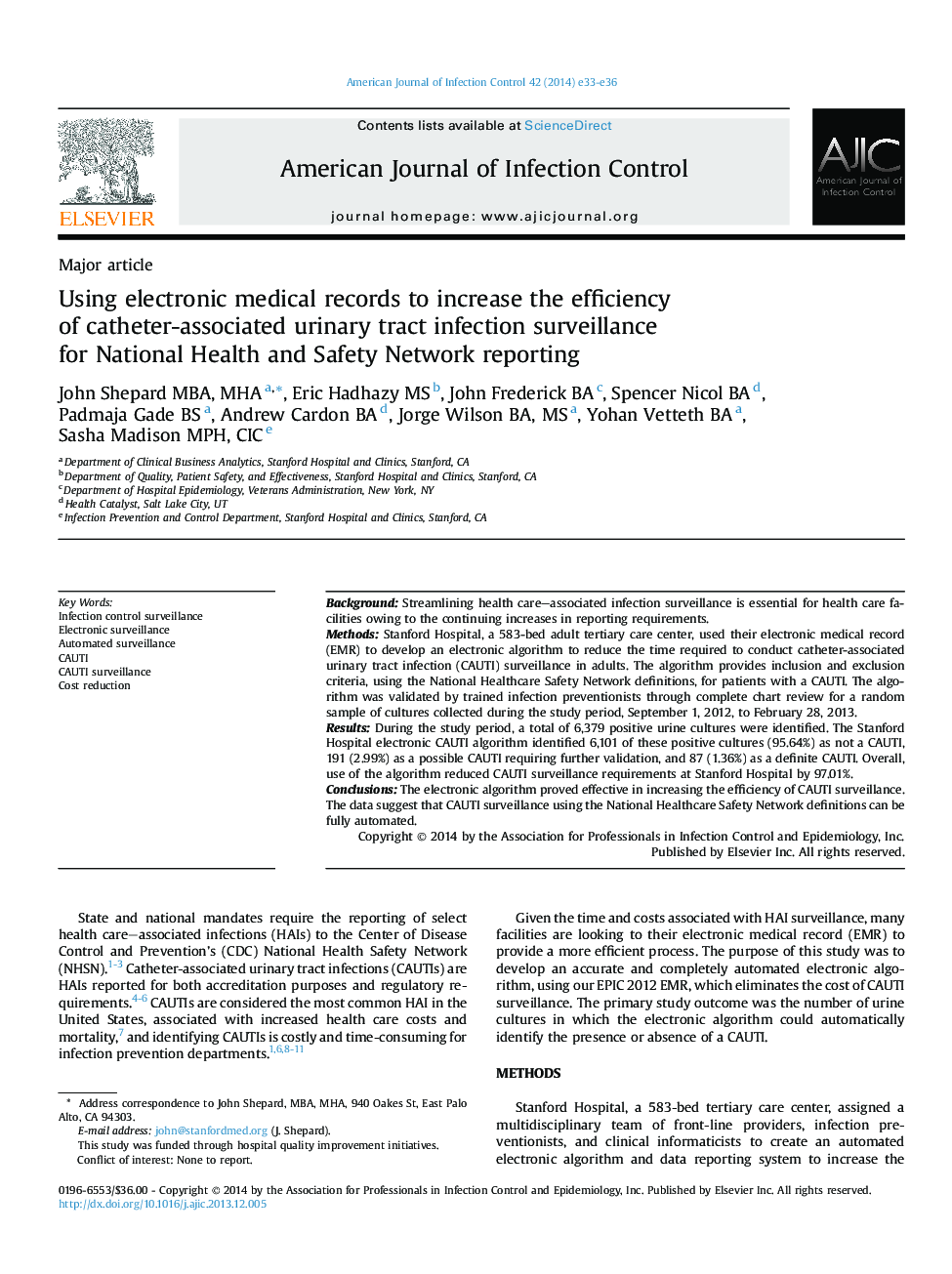| کد مقاله | کد نشریه | سال انتشار | مقاله انگلیسی | نسخه تمام متن |
|---|---|---|---|---|
| 2637680 | 1563489 | 2014 | 4 صفحه PDF | دانلود رایگان |
BackgroundStreamlining health care–associated infection surveillance is essential for health care facilities owing to the continuing increases in reporting requirements.MethodsStanford Hospital, a 583-bed adult tertiary care center, used their electronic medical record (EMR) to develop an electronic algorithm to reduce the time required to conduct catheter-associated urinary tract infection (CAUTI) surveillance in adults. The algorithm provides inclusion and exclusion criteria, using the National Healthcare Safety Network definitions, for patients with a CAUTI. The algorithm was validated by trained infection preventionists through complete chart review for a random sample of cultures collected during the study period, September 1, 2012, to February 28, 2013.ResultsDuring the study period, a total of 6,379 positive urine cultures were identified. The Stanford Hospital electronic CAUTI algorithm identified 6,101 of these positive cultures (95.64%) as not a CAUTI, 191 (2.99%) as a possible CAUTI requiring further validation, and 87 (1.36%) as a definite CAUTI. Overall, use of the algorithm reduced CAUTI surveillance requirements at Stanford Hospital by 97.01%.ConclusionsThe electronic algorithm proved effective in increasing the efficiency of CAUTI surveillance. The data suggest that CAUTI surveillance using the National Healthcare Safety Network definitions can be fully automated.
Journal: American Journal of Infection Control - Volume 42, Issue 3, March 2014, Pages e33–e36
